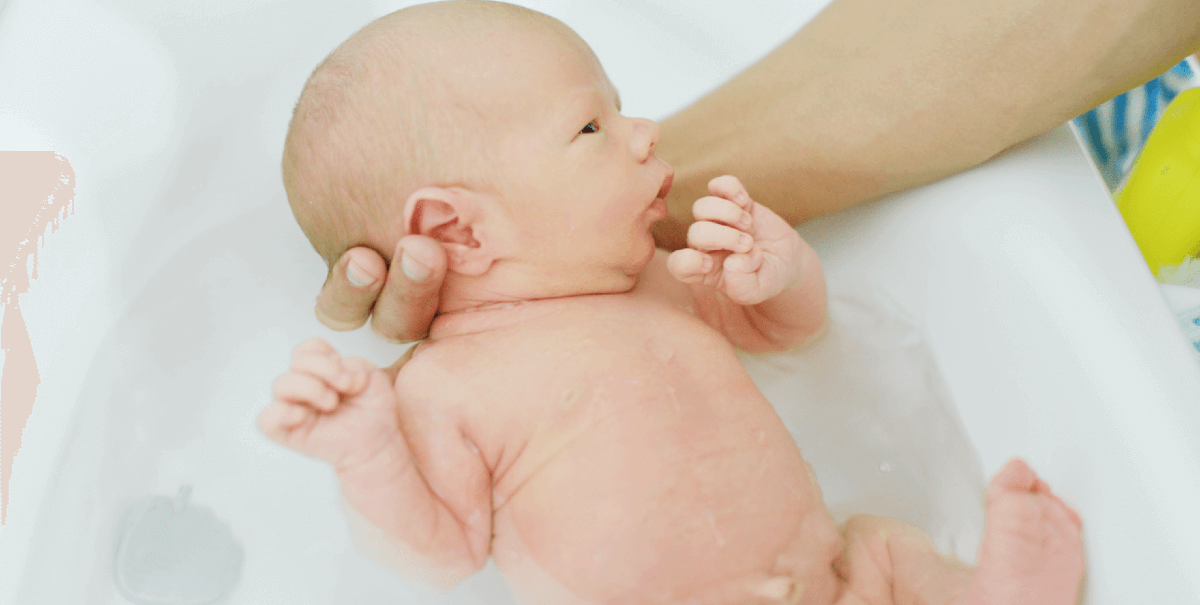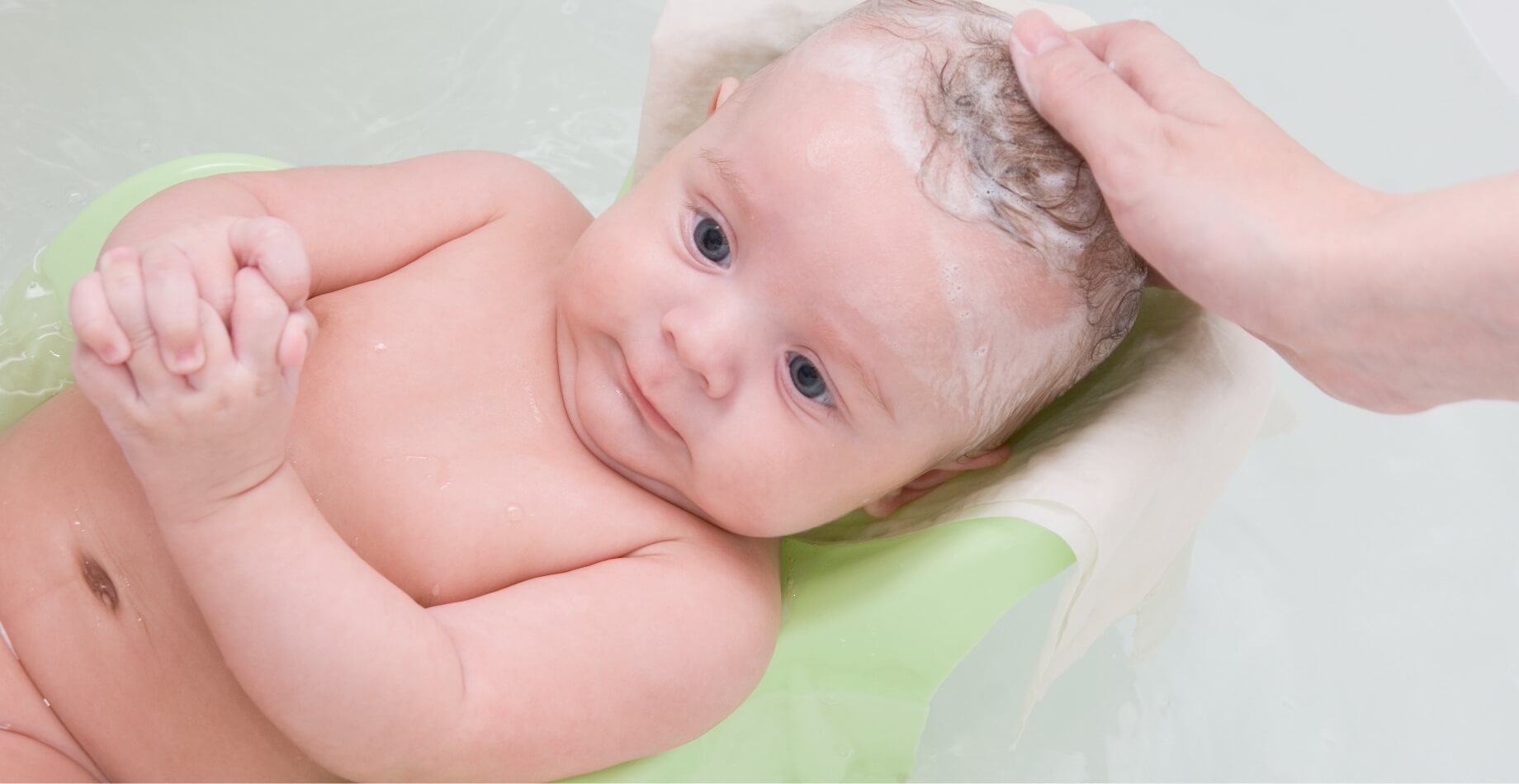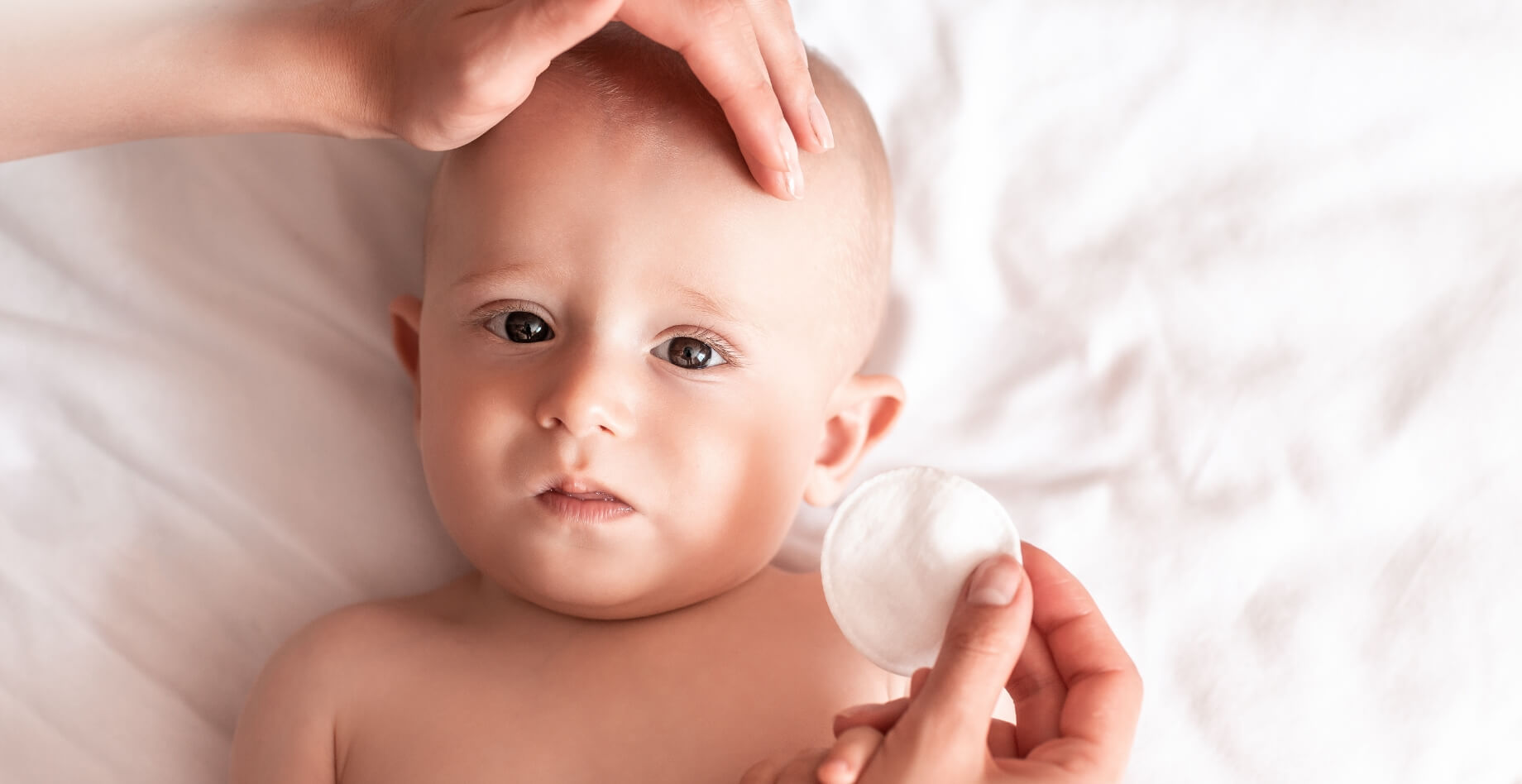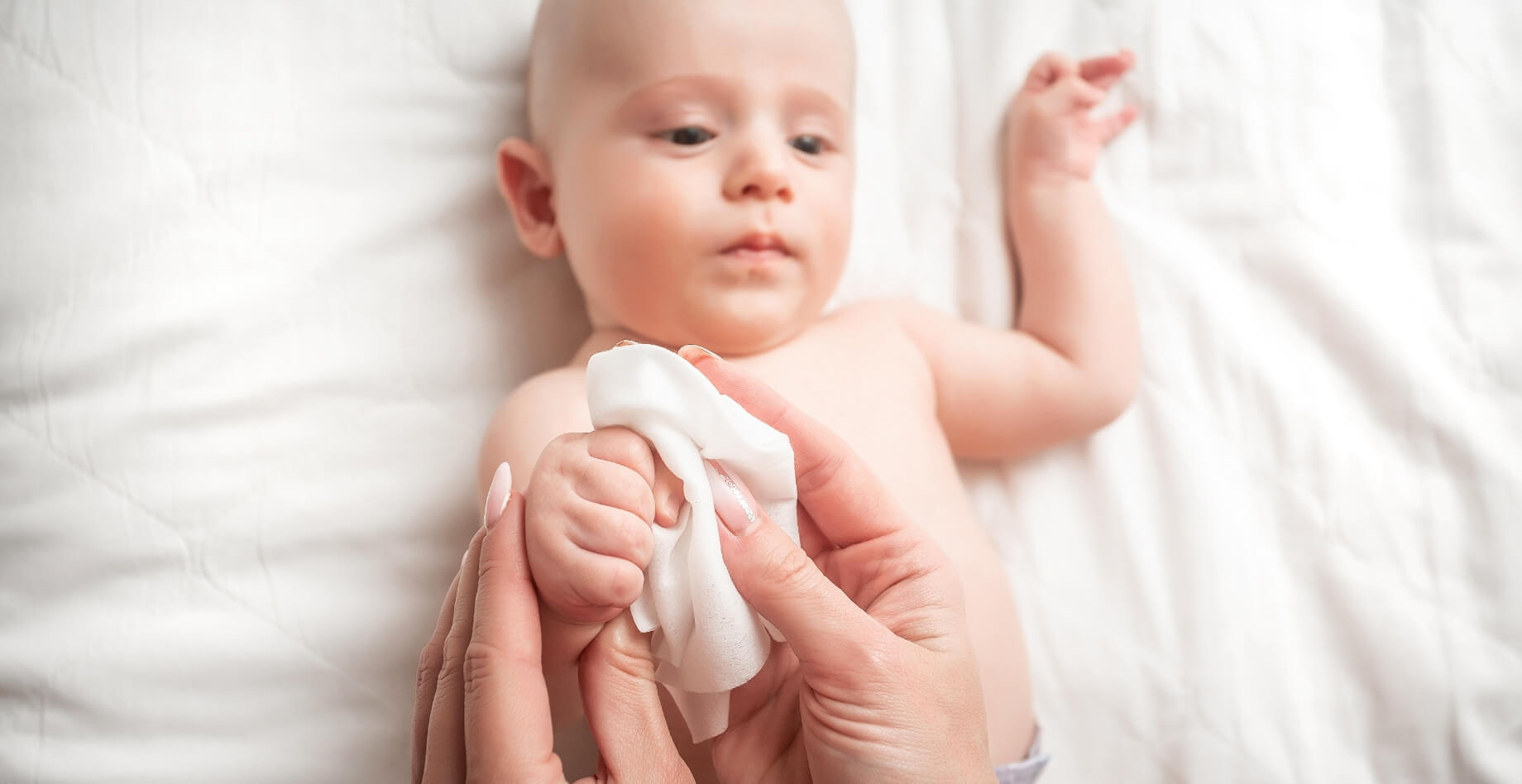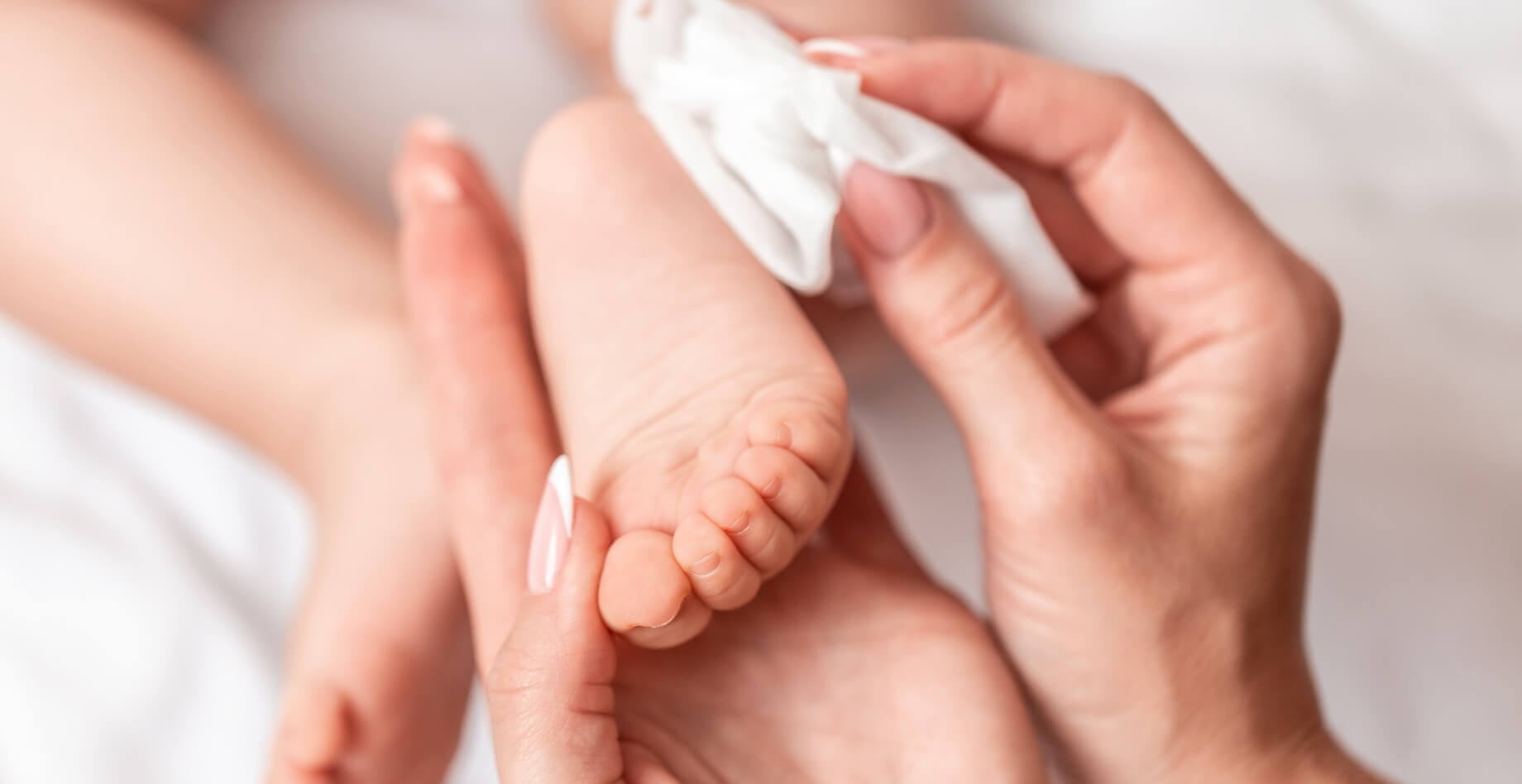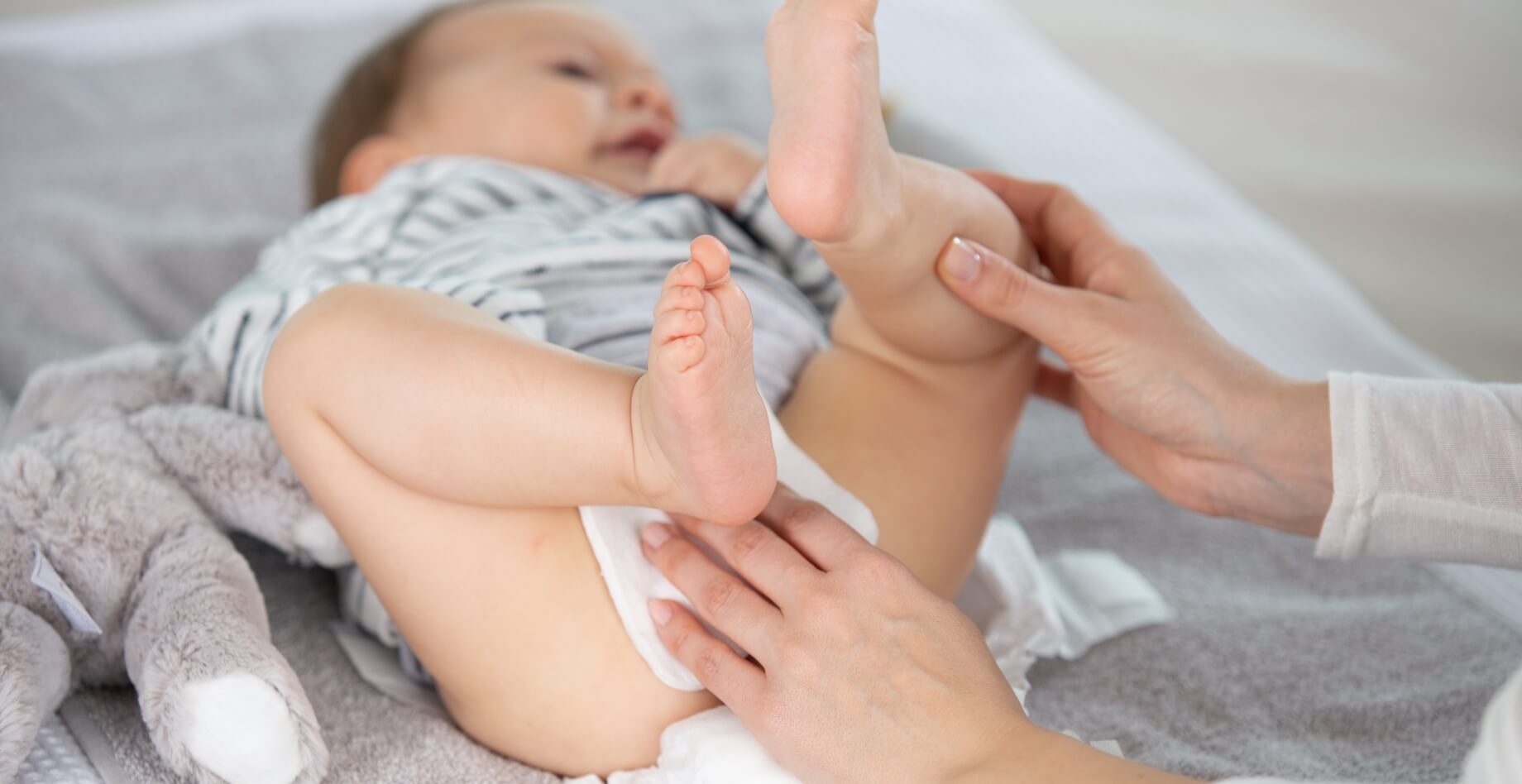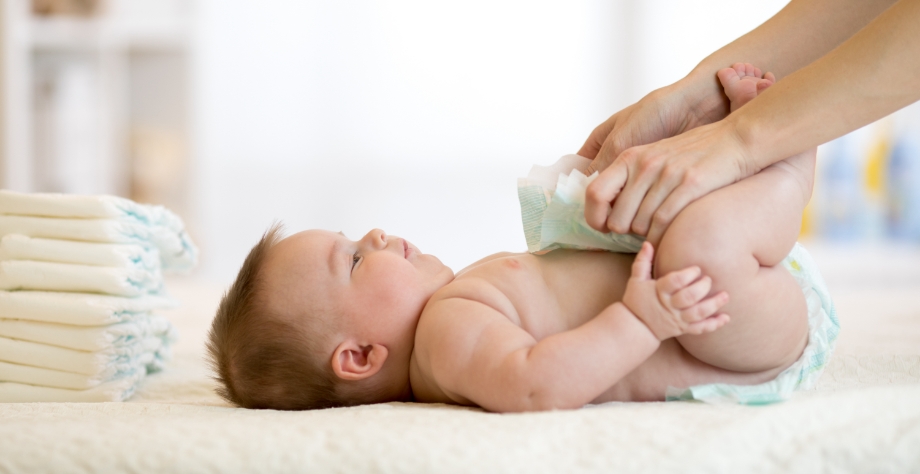Newborn Care
“Am I cleaning the belly button properly?” “Has the baby eaten enough? Why is the baby crying?” “How am I supposed to hold and bathe the baby?” These are only some of the questions new mothers ask themselves in silence and try to address.
The first thing a mother needs to keep in mind is that nature has blessed them with the maternal instinct, so that they may cope with the demands of this role. Furthermore, a new mother will find her pace after the first couple of days.

Here we will analyze some basic stages in newborn care, to help new mothers in those first days at home.
How to care for your baby
Washing and bathing

What you need to pay attention to
- EARS: Wipe them externally with a towel after the bath. DO NOT use cotton swabs because they carry the risk of hurting the eardrum, destroying the natural protection of the earwax and spreading infections.
- NOSE: There is a significant amount of mucus after childbirth and you may hear a mild sniffle when the baby eats or sleeps. If the baby has difficulty eating, then you should wash the baby's nose with saline before feeding.
- EYES: If you need to wash the baby's eyes, use saline and sterilized gauze (one for each eye).
- NAILS: The baby's nails must not be clipped right after birth. If the newborn scratches themselves, use gloves. Around 20 days after childbirth, the baby's nails will not be attached to the skin and then you can clip them.
- Clip the nails while the baby is sleeping.
- If, however, you decide to clip them when the baby is awake, ask your companion to help you.
- Always use scissors with rounded edges, specially designed for infants and small children.
Care

Common situations
Jaundice
Neonatal jaundice or hyperbilirubinemia is a condition in newborn babies that causes yellowing of the skin and other tissue. Bilirubin levels exceeding 5mg/dl cause jaundice in newborns, while in adults, jaundice is caused by bilirubin levels exceeding 2mg/dl. In newborns with jaundice the white part of the eye turns yellow, as does the color of the face. The yellow color extends to the chest.
The jaundice color of the skin in newborns first appears on the face and, as bilirubin levels increase,
it extends towards the torso and limbs. Jaundice is quite common in newborns; it appears in 50-60% of babies in their first week.
Recommendations
Frequent breastfeeding and exposing the newborn to natural light
Toxic erythema
This is a common skin rash seen in newborns. It is in the form of small blisters and redness. The rash appears in the first few days after birth. Signs usually disappear on their own a few hours later. They may reappear on another part of the body. Toxic erythema in newborns goes away completely within 2 to 3 weeks.
NOT CLINICALLY SIGNIFICANT AND DOES NOT REQUIRE TREATMENT.
Cradle cap
Cradle cap (seborrheic dermatitis in infants) is a self-limiting skin condition that occurs in the first weeks of the baby's life and mainly affects the face, scalp and upper body. It is very common in infants, especially the small scaly patches on the scalp.
It is a harmless condition that can be dealt with frequent combing and treatment with olive oil.
Bloated breasts
If your baby, boy or girl, shows bloated breasts or even if you see some milk coming out, do not worry.
The bloating will subside on its own when the hormonal changes that caused it are restored, unless there are clear signs of inflammation.
If you see blood or mucus coming out of the vagina, do not worry, but inform your pediatrician.
Colics
Colics remain an unsolved mystery. In an attempt to formulate a single definition for colics, they are described as:
The behavior of a healthy newborn or baby who displays intense crying that lasts:
- more than 3 hours a day
- more than 3 days a week
- more than 3 weeks.
As far as colics are concerned, so far we know that:
- They may start at the age of 2 weeks if your baby is preterm, or later if your baby is premature.
- They always subside on their own after 3 or 4 months.
- They are not affected by the delivery method and the type of feeding (breastfeeding or formula).
- Children who suffered from colics as babies are no different from those who did not.
The precise cause of colics is yet unknown. It is generally believed that it is an intense reaction to the stimuli your baby is subjected to at the beginning of their life. Recent studies demonstrate the importance of the fourth trimester of the pregnancy, that is the time right after delivery. It seems like during the first months of their life, you should treat your newborn as if they were still in the uterus.
The most probable causes of colics in babies may be the following:
- The digestive system that gradually changes and adapts to food.
- Gas in the baby's intestine.
- Hypersensitivity to or hyperstimulation from light, noise and other stimuli.
- The developing nervous system and its interaction with the environment.
- A random infection.
- Gastroesophageal reflux or stomach problems.
If your baby has colic, do not worry and do not treat this as a pathological condition. We have come to the conclusion that it is a rather normal adaptation process to the new environment outside the uterus. Sometimes this process is combined with intense symptoms.
Crying baby
It is good for parents to know what is normal in terms of their baby's urine production and bowel movements. There are differences and specificities depending on the type of feeding and the age of the baby.
The most common causes of crying are:
- at night before bedtime if the baby is tired
- during the day because the baby is used to being held
- the baby is hot or cold
- the baby is hungry
- the baby is soiled
- the baby's calmness and routine have been disrupted
- the colics during the first three months
Urination - Bowel movements
Colics remain an unsolved mystery. In an attempt to formulate a single definition for colics, they are described as:
The behavior of a healthy newborn or baby who displays intense crying that lasts:
- Day 1
Frequency: The baby must have at least 1 diaper wet with urine. Composition: The urine looks concentrated, yellow, possibly containing pink crystals. - Day 2
Frequency: The baby must have at least 2 diapers wet with urine. Composition: The urine looks concentrated, yellow, possibly containing pink crystals. - Day 3
Frequency: At least 3 wet diapers. Composition: The urine is less concentrated. It is less likely to find pink crystals. - From Day 4 to 6 Weeks
Frequency: At least 6 very wet diapers per 24 hours. Composition: The urine is faint yellow, clear, with a light smell. No crystals.
For babies who breastfeed exclusively:
- Day 1-2
Frequency: During the first 24 hours of the baby's life, the baby must have at least 1 bowel movement with black excretions – a substance known as meconium (thick black or dark green substance). - Day 3
Frequency: At least 1 diaper. Color: brown-yellow or brown-green. Not black. - From Day 4 to 3-6 Weeks
Frequency: At least 3 diapers with stools every 24 hours. Frequent bowel movements are an indication and reliable sign that the baby drinks breast milk. Stools are soft, yellow, yellow-green or yellow-brown, not black. Liquid or seedy. The bowel movements of breastfed babies vary from day to day and from child to child. They usually do not smell bad.
Newborn safety
- The baby must always travel in the special car seat, placed on the rear seat, facing backwards. Do not add objects on the car seat that are not specially designed for this purpose. Do not leave the baby in the car seat outside the car; it is designed for travel only. Do not leave the baby alone in the car, not even for a minute.
- Do not leave small toys, flexible objects, pillows in the cot.
- Put the baby to sleep in the cot, face up, next to you. Any other position (on their side or face down) is not allowed, except in rare cases following the instructions of the pediatrician. It is dangerous to fall sleep in your bed or the couch while holding your baby.
- Hide small and pointy objects in the house, as well as plastic bags.
- Keep your hand on the baby at all times when bathing or changing the baby. When washing the child, check the temperature of the water with your elbow or the inside of your wrist. Keep your hand under the tap to constantly check water temperature.
- Do not tie anything tightly around the newborn's neck.
- Do not use safety pins and do not pin anything on the newborn's clothes
Baby massage
Relaxed hands
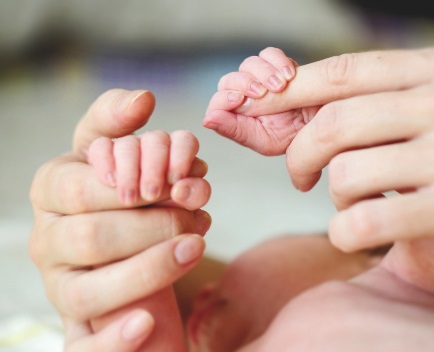
Feet & Soles
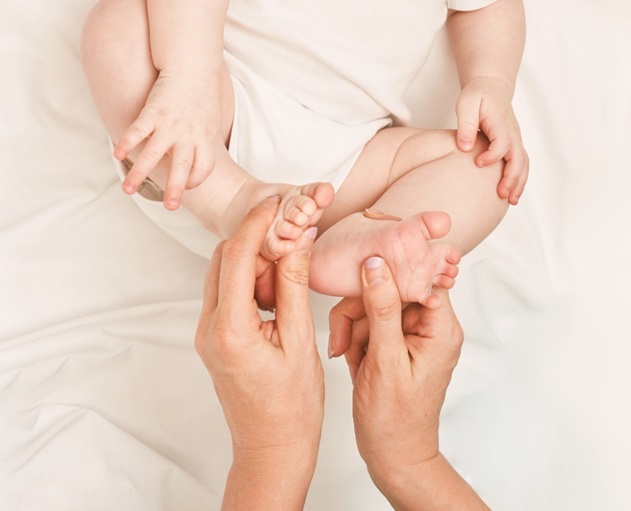
Feet
Make sure that you have enough oil in your hands before you start. Start with the feet of the newborn, because babies are usually more receptive in that area. Caressing downwards is more soothing.
Soles
Press gently and massage each toe with your thumb and index. Use both thumbs interchangeably, massage the upper part of the sole, from the toes to the ankle. Repeat several times.
Belly
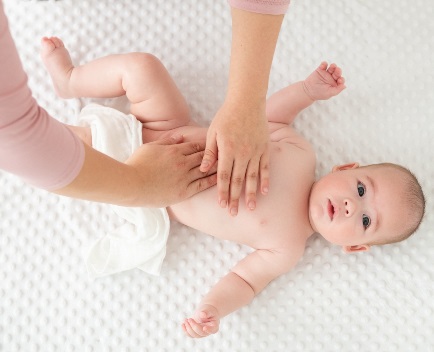
After the umbilical cord of your baby has healed, gently massaging the baby's belly helps with digestion and tummy problems.
Start by placing your hands on the baby’s belly, firmly but gently.
If your baby looks happy, make gentle downward movements, one hand after the other.
Back
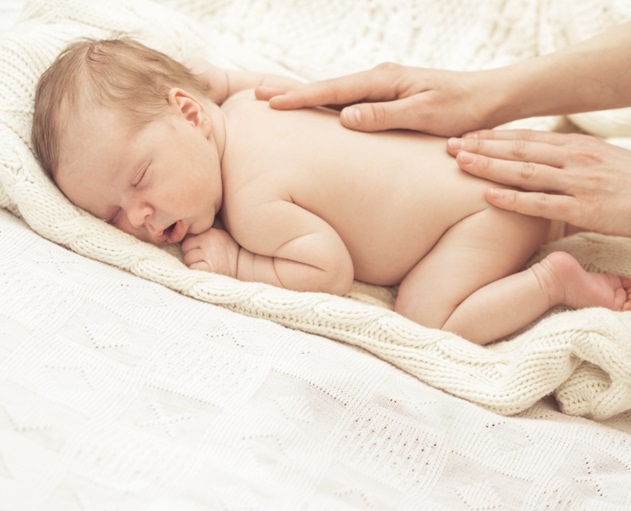
Contact with naked skin enhances the sense of bonding between the baby, the mother and the father. While holding your baby close to your chest, massage the baby's back, starting from the neck and going all the way down to the buttocks. Through the massage you will start figuring out the way your baby communicates and you will come up with different ideas to support your baby in the first months of their life. You and your baby will discover together what suits you best. It is important to remember that massaging is something you do with your baby and not to your baby.





